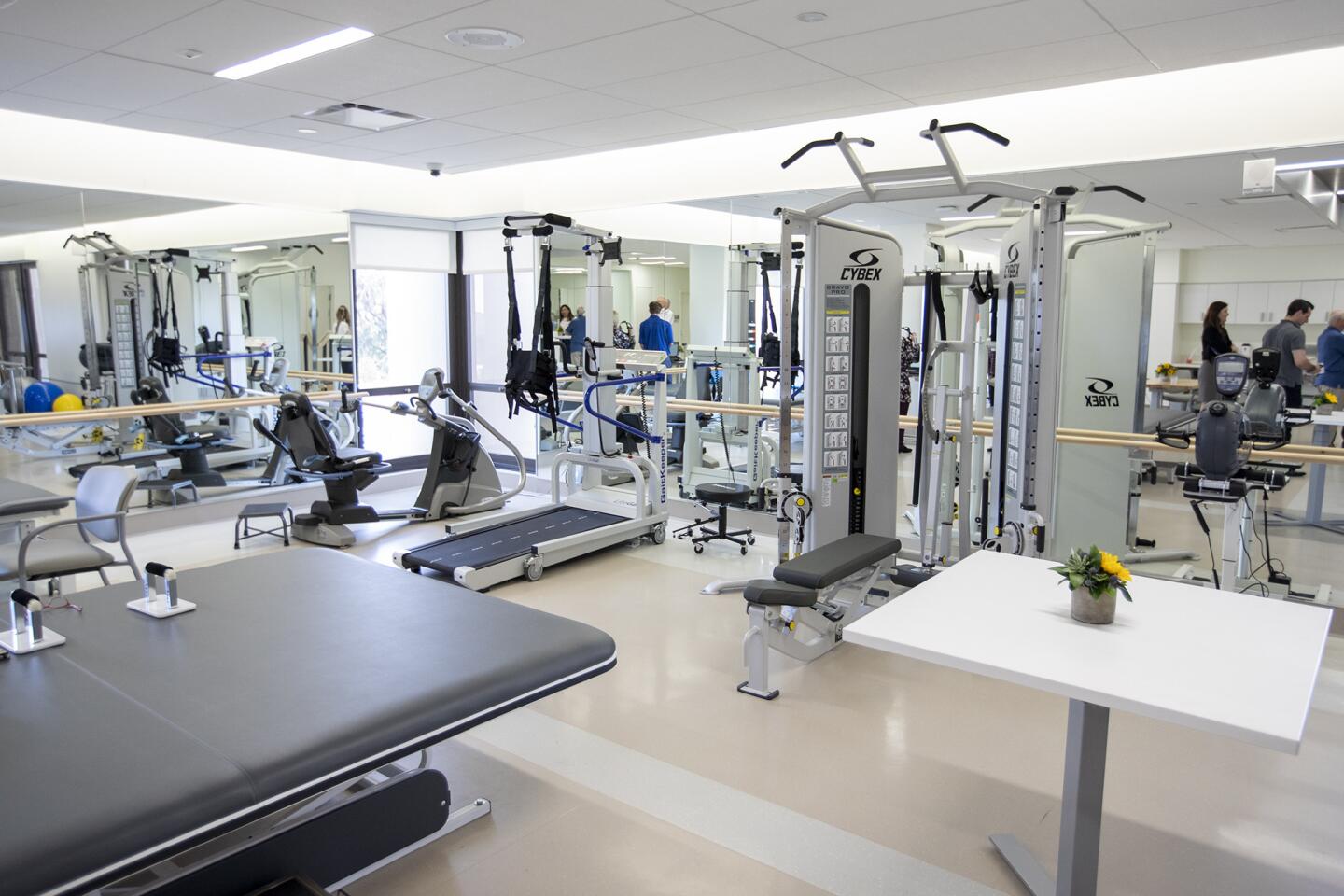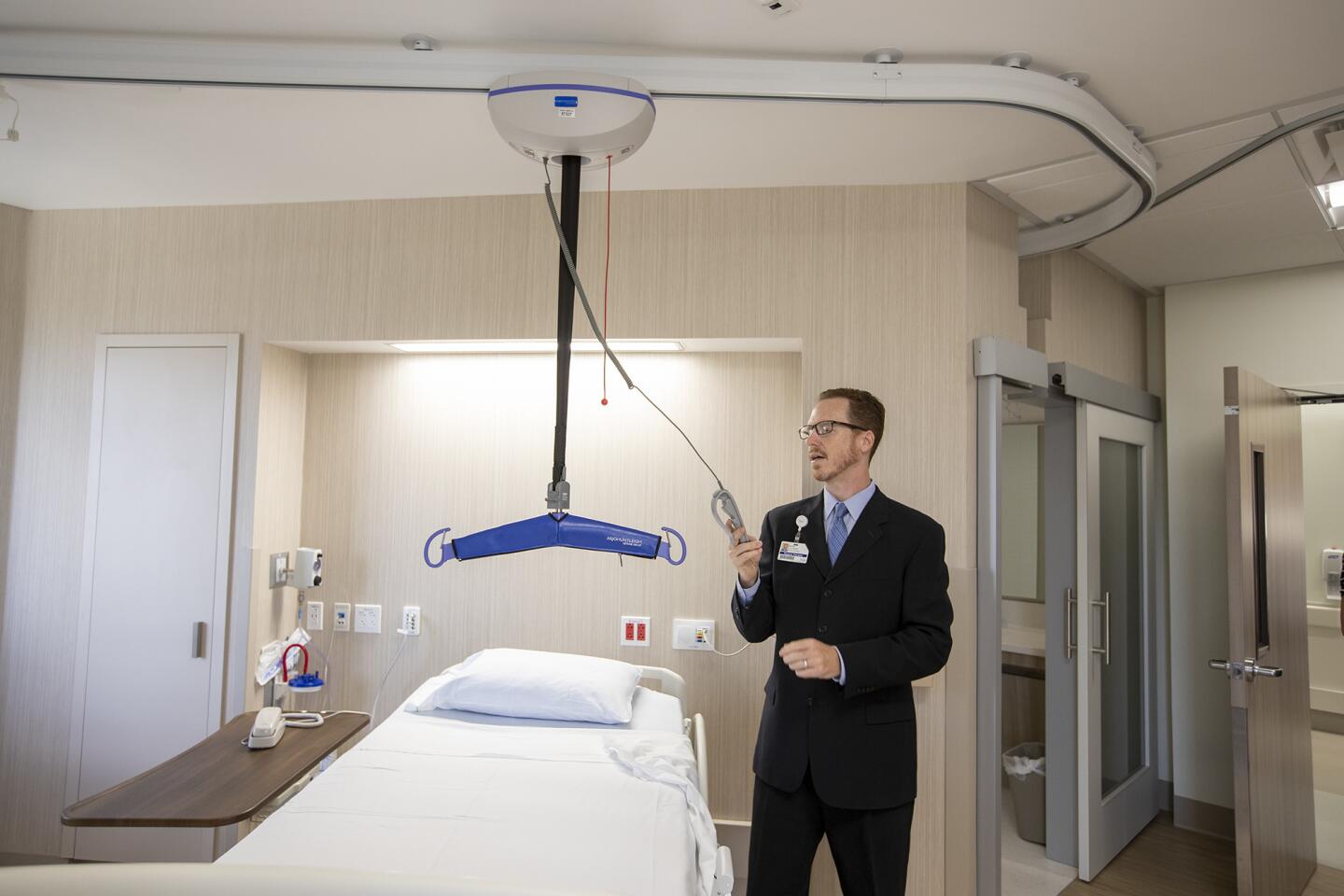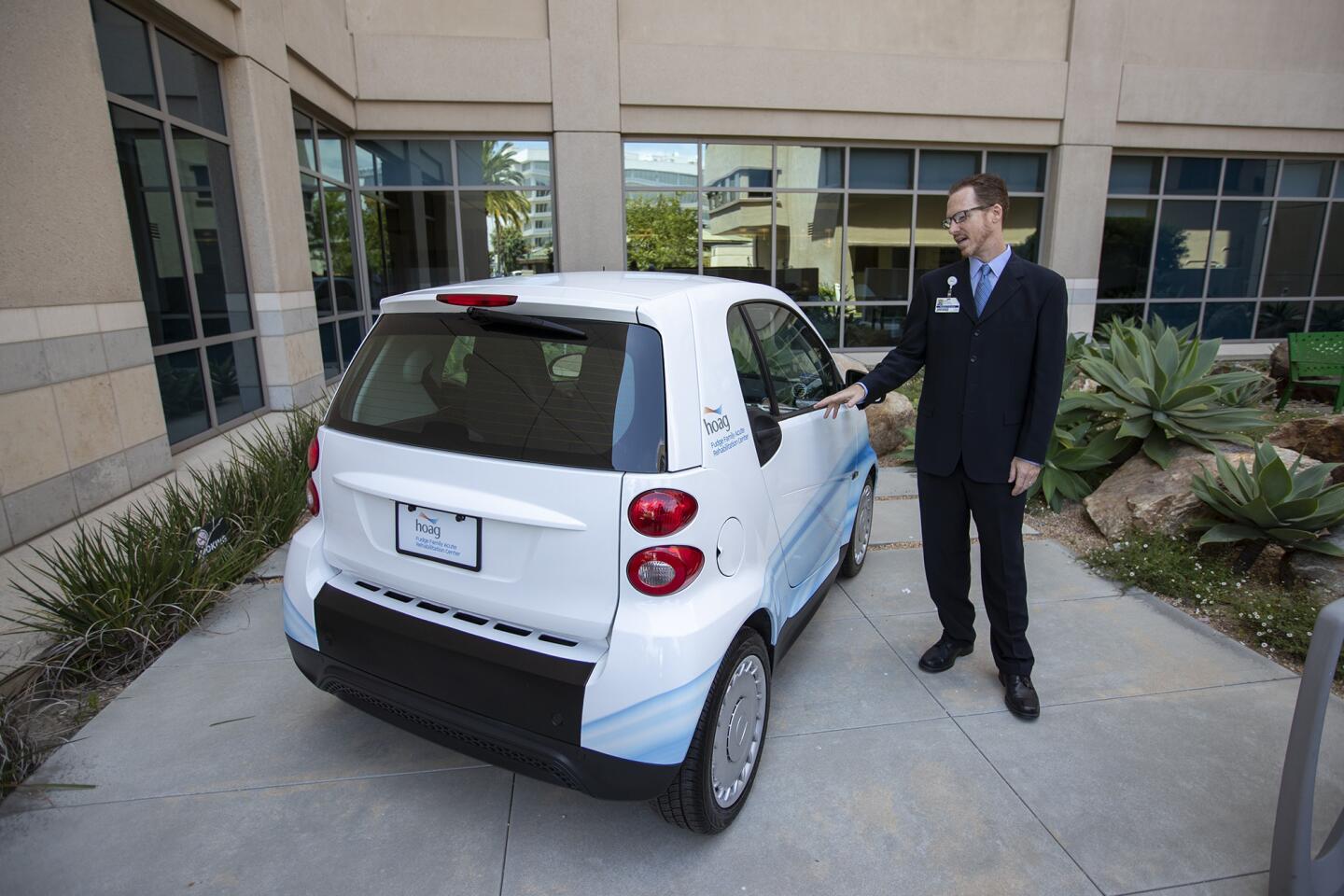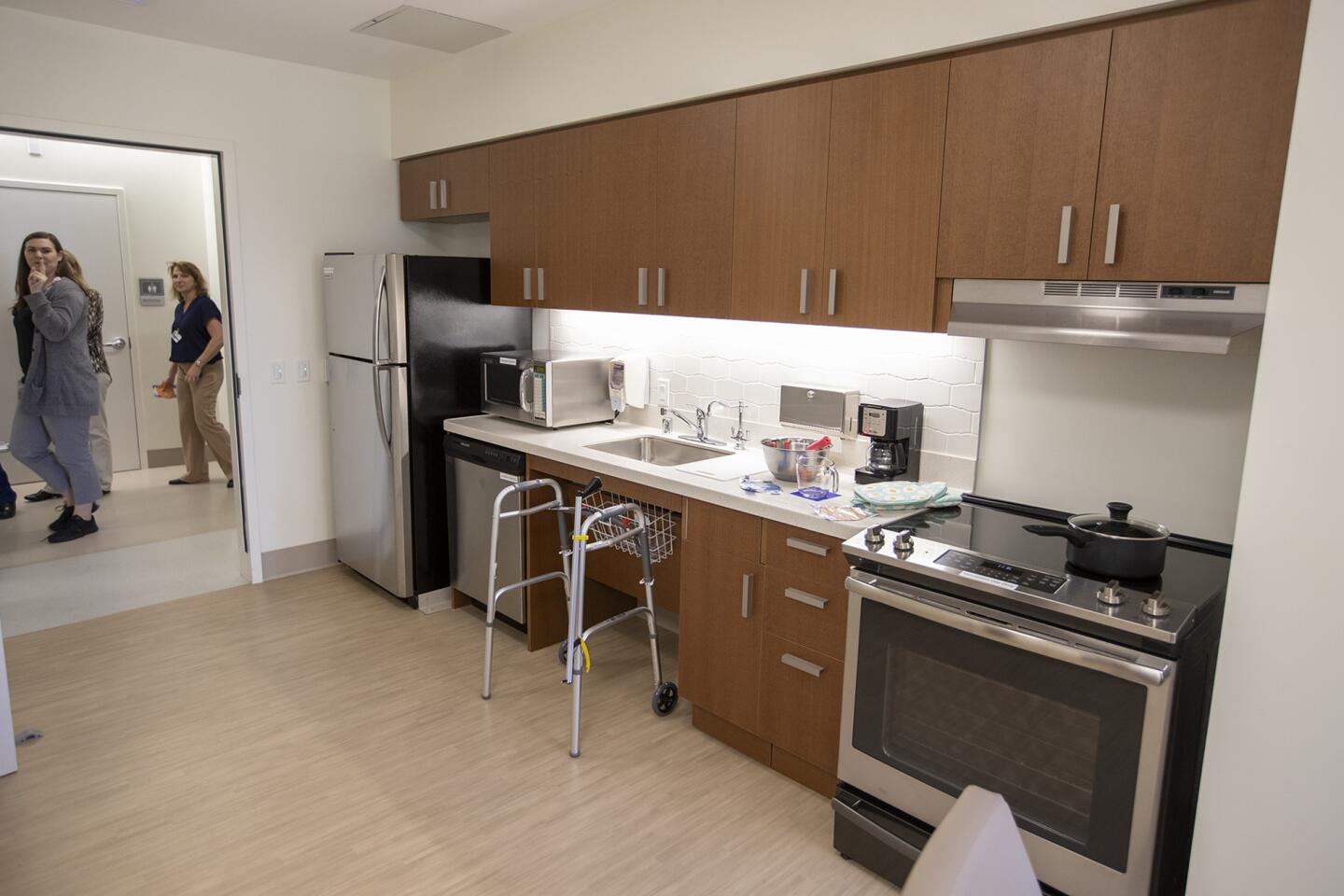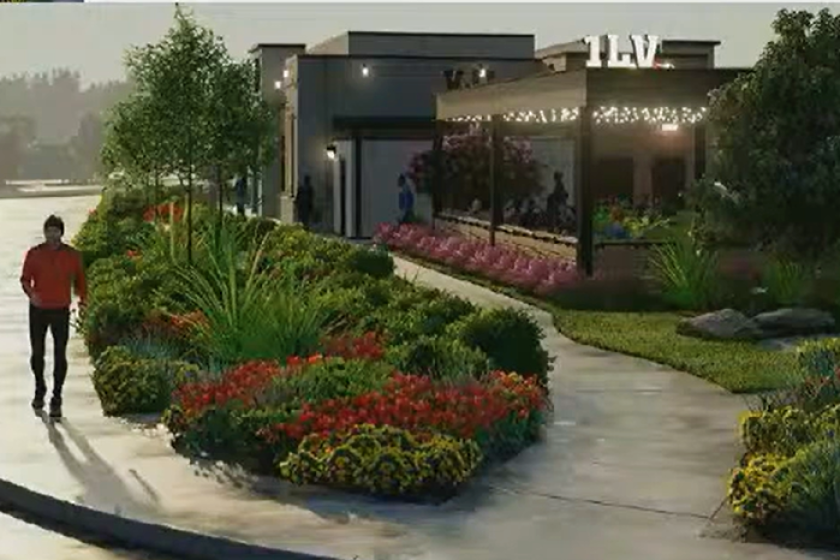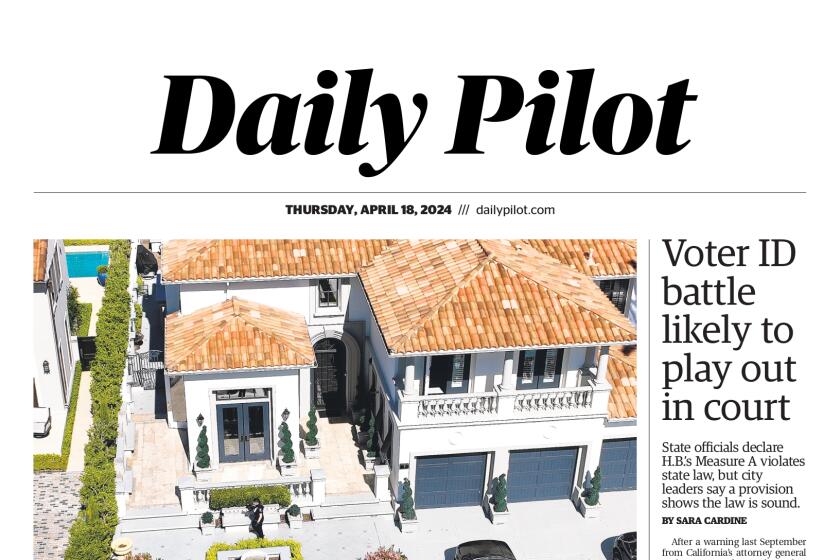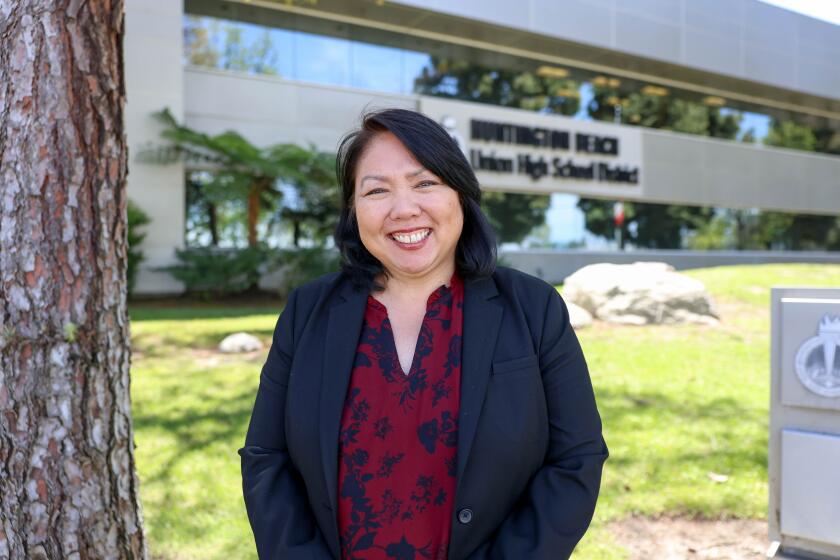Virtual reality, Smart car and putting green help patients at new Hoag center recover from traumatic injuries
Hoag Hospital in Newport Beach opened a 21,000-square-foot rehabilitation center on Monday for adults who have suffered orthopedic and neurological crises, including strokes and other traumatic injuries.
The Fudge Family Acute Rehabilitation Center includes 18 rooms, workout equipment, a garden, a putting green and a virtual reality system.
For the record:
6:00 p.m. June 20, 2018An earlier version of this article stated that Gary Fudge donated $1.5 million for the Fudge Family Rehabilitation Center. In fact, he donated $4 million.
Hoag Dr. Keyvan Esmaeili said the center will serve as a transition area where patients relearn basic tasks lost to injury or illness.
The patients are recovering from amputations, brain, spinal cord and orthopedic injuries, strokes and pulmonary disorders, brain tumor surgery and similar challenges.
“The simplest of tasks can be tremendously overwhelming and fatiguing for these patients,” said Mark Glavinic, Hoag’s director of rehabilitation. “This is about bringing function and independence back to them.”
The rehab center has a variety of methods to aid patients with regaining motor function, ranging from the traditional — like using overhead harnesses — to the unique.
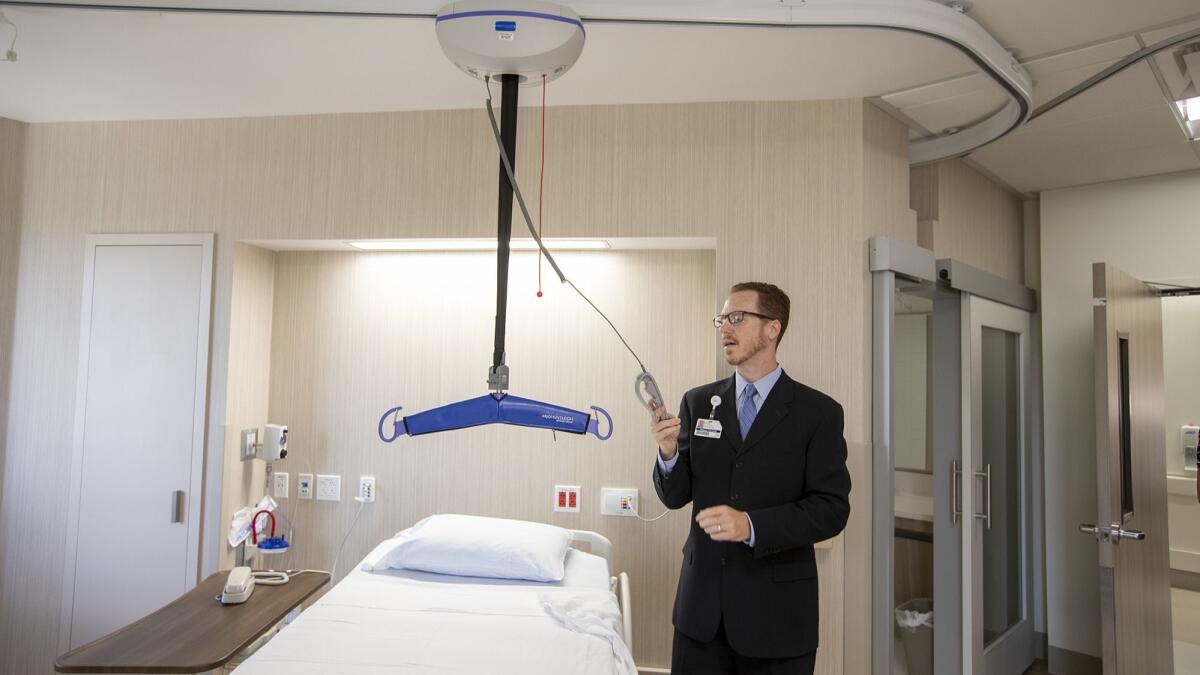
Glavinic said the virtual reality system is a novel way for patients to sharpen hand-eye skills; they can, for example, use virtual swords to pop on-screen balloons. The system stores patients’ data so medical personnel can track their progress.
With an average stay of 12 to 15 days, each patient gets his or her own bedroom and bathroom.
An electronic lift is available to lead patients to the bathroom from bed if they can’t support themselves. Esmaeili said this prevents injuries that can occur when nurses lift patients.
The rehab team is composed of physicians, nurses and therapists from stroke centers, neurological institutes and other specialized areas.
The facility also includes a room built to mirror an apartment. It is meant to be a transition room — with associated “obstacles” to navigate — before a patient is released to go home. Patients can practice washing dishes, using a stove and opening cabinets.
When patients need a break from the indoors, recreational therapists will guide them to the garden and putting green.
There’s also an engine-less Smart car so patients can relearn how to get in and out of a vehicle.

The facility, in the making for about 10 years, is one of only a few acute rehabilitation centers at Orange County hospitals.
Heidi Pallares, Hoag’s director of corporate communications and media relations, said Hoag doesn’t publicize the full cost of its projects, though $4 million was donated for the center by Gary Fudge of Newport Beach.
Fudge, 74, who suffered a stroke in 2010 and underwent treatment at Hoag, said he wanted to help others who are going through the same psychologically draining rehabilitation.
“I came face to face with my mortality,” Fudge said. “It wasn’t pleasant.”
Fudge had to regain the ability to perform even the most basic tasks, like deleting an email. He said he has virtually no limitations now.
Fudge said he would have benefited from the new center had it been around when he had his stroke. In particular, he said, he shouldn’t have been going home after rehab sessions.
“I would have preferred staying here,” Fudge said. “This could have helped me … and it will undoubtedly help others.”
Twitter:@benbrazilpilot
All the latest on Orange County from Orange County.
Get our free TimesOC newsletter.
You may occasionally receive promotional content from the Daily Pilot.
